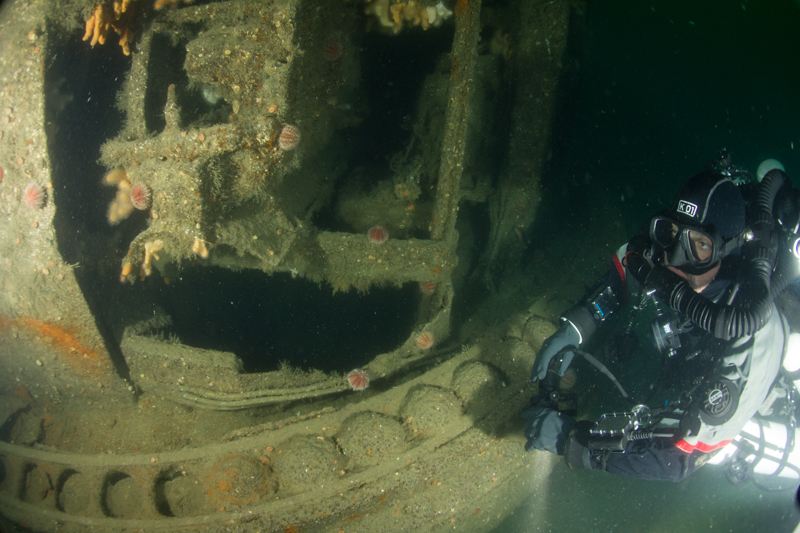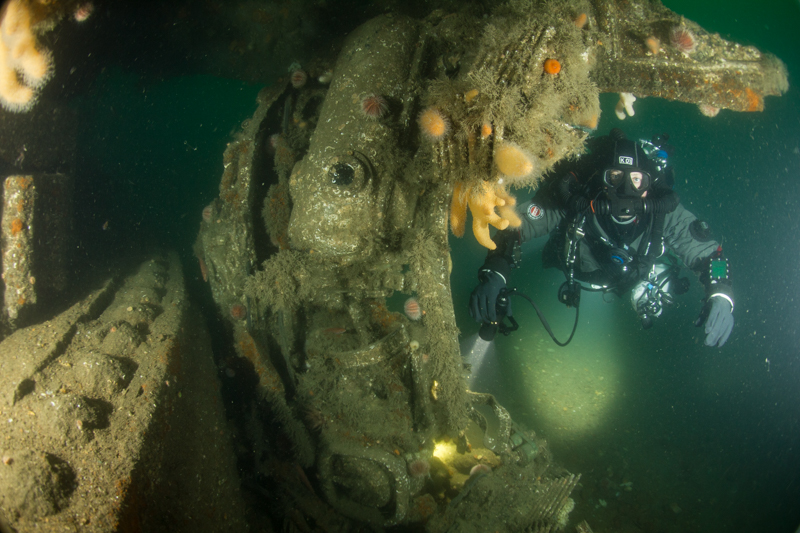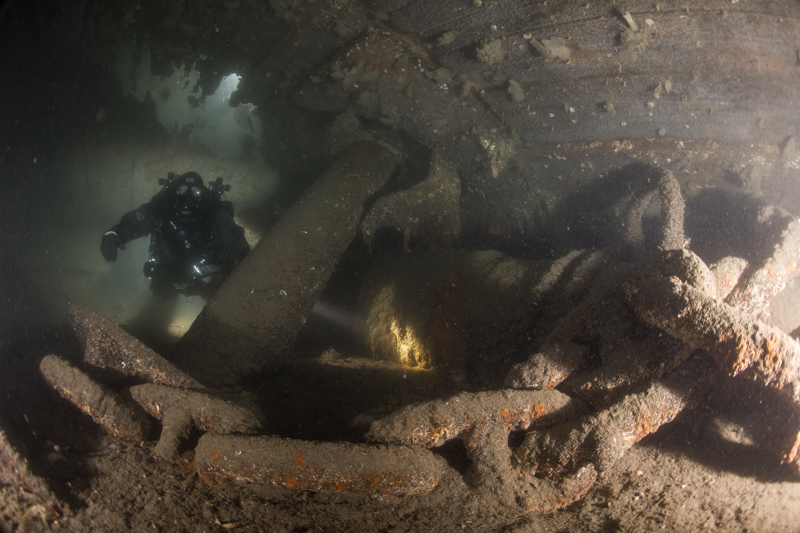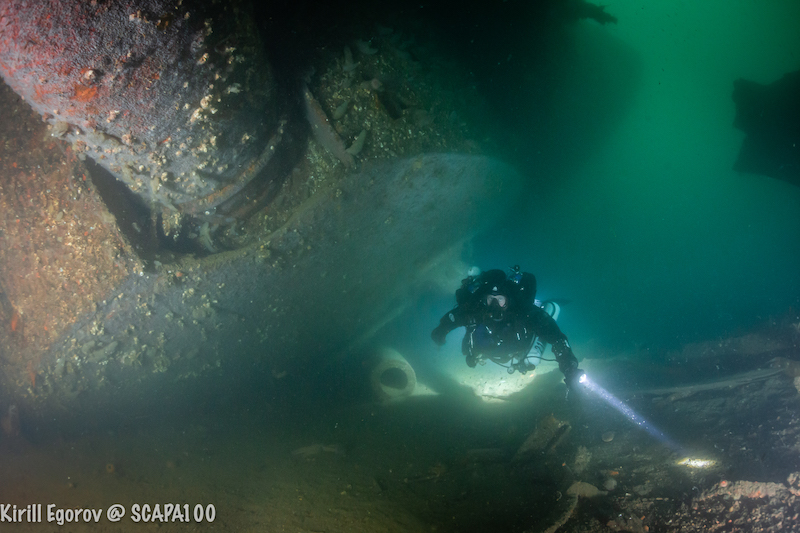Everybody seems to be using rebreathers now now, even GUE divers. But let’s see if we can unpick some of these rebreather myths that are out there at the moment!

Rebreather Myth 1 – Rebreathers mean less deco
I wish that were true. It’s one of the most common rebreather myths out there. Most of the time you will end up doing more or less the same amount of decompression that you would have done on a comparable open circuit dive. There is one exception to that. It relates to multi-level dives where you get to your maximum depth and then spend a long time working your way up a reef. Here the rebreather will give you less decompression that the same dive on open circuit. But apart from that, the deco is within minutes of your open circuit buddy…

Rebreather Myth 2 – You can’t dive with OC divers
With a GUE configured JJ-CCR rebreather, diving with an open circuit diver is relatively straightforward. The equipment configuration is very familiar. You you have a twin set on, with exactly the same open circuit regulators, and configured in the same way too. The rebreather just sits between the double cylinders and the breathing hoses are on top of everything. Donating gas has a slight delay and an extra step compared to open circuit. You’ll need to brief your GUE buddy on a few extra pieces of the equipment check, but apart form that, you’re good to go! Rebreather myth number 2 dispelled!
Rebreather Myth 3 – Rebreathers are cheaper
Well, like a lot of things, yes and no. It really does depend on the diving you’re doing. And it’s one of the most dubious of al of the rebreather myths. If you dive a 45m wreck, you will use approximately 10-20bar from your rebreather backgas supply regardless of your bottom time. So from this perspective it might seem cheaper. And if you limit yourself to trimix costs alone, then you’d be right. However, don’t forget that you will need to buy a machine and get trained to use it. You will not get much change from £10,000, or approximately €10,000 at todays exchange rate (yes, topical joke).
You will also need to spend around £500 per year to keep the machine working properly and safely. It ultimately depends on how much trimix diving you’re doing. The more you dive, the quicker you break even. And in my own personal experience, I found that I dive more now with the rebreather . Just because I can. If you only dive nitrox depths, do not get a rebreather for financial reasons!

Rebreather Myth 4 – Electronics are unreliable
This might have been true back in the 1990’s and early 2000’s, but I honestly think that rebreather electronics have reached a maturity now where it is appropriate to use them. This rebreather myth is a frustrating one, because it’s generally promoted by people that don’t understand how the diver, the rebreather and the electronics can interact together.
There is an underlying assumption that the rebreather electronics can malfunction without the diver knowing it. This is simply not true, as long as you know what to look for of course. Significant electronic problems almost always result in a change in buoyancy or the breathing characteristics of the machine. If you are in tune with your diving then you will notice the problem in ways other than alarms and flashing lights,
You always have a way to overrule the electronics of course. If things get really weird, then bailing out to open circuit is always a safe bet.
Rebreather Myth 5 – Rebreathers are easy / hard to dive
Delete depending on which guru you are talking to. Rebreathers are different to dive, that is all. But in some senses, they are the same too. People often talk about buoyancy being more difficult on the rebreather. The idea is that on open circuit you can use your breathing to change depth and stabilise if you need. Inhaling or exhaling will not change your depth, a skilled diver will be very “in-tune” with their breathing. Using breathing to initiate a depth change is followed by an adjustment to the wing and drysuit. The breathing will return to it’s normal pattern and range.
On a rebreather, there are a number of ways of changing depth. Which one you choose will depend on factors which do not need to be discussed now. But you can increase your buoyancy by adding gas to either the breathing loop, the wing or the drysuit. Once you reach your target depth, you adjust the loop, the wing and the suit to match your new depth. So it has a lot of similarities, but only if you have very precise skills on open circuit.
Rebreather Myth 6 – Rebreathers are Complex Things
This one is not a rebreather myth! They require a lot more preparation and attention to detail than an open circuit system. Checklists are invaluable. There are several things you can forget to do when assembling a rebreather that will cause you untold problems. A methodical checklist where you sign off each step is a great tool. It gives you the best chance of jumping into the water with a working machine.
Rigorous bubble checks need to be done. That fizzy regulator you use on your open circuit equipment? It has no place on a rebreather.
I estimate that it takes me 30 minutes longer to get the rebreather ready than for open circuit. Then it takes another 30 mins after the dive to get it ready for the next day again. When I first started, it was more like an hour at each end of the day. That soon came down to where it is now, and I have no desire to make it quicker than that.

So there they are. 6 myths of rebreather diving. Hopefully that was useful. If you’ve got any comments, more questions, or maybe you’ve heard something else that sounds like a myth too, then add it to the comments below!
